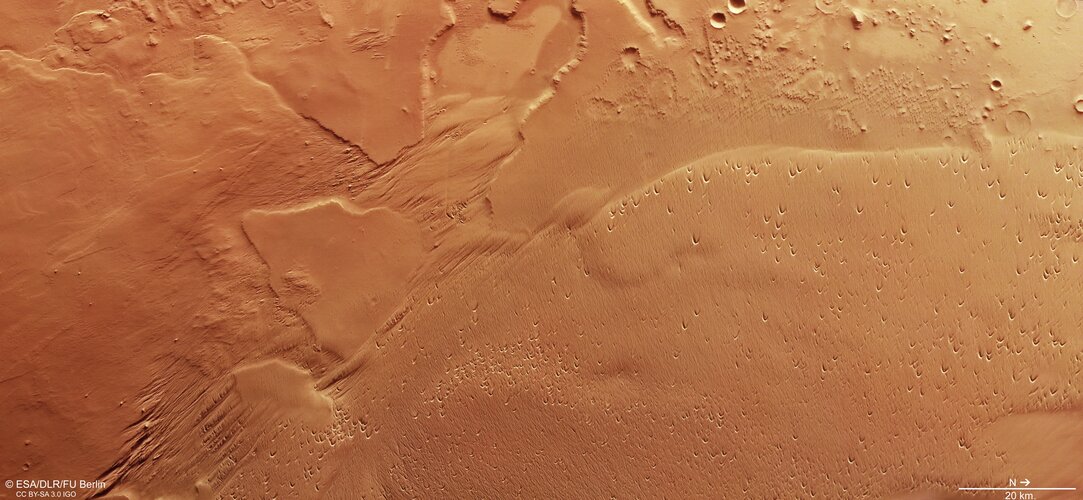Eddies and blowouts
The aforementioned crescent-shaped depressions are also the doing of martian winds. These saucer- or trough-shaped hollows, known as blowouts, are apparently carved into the sand by wind erosion. To create a blowout, sand-laden wind whips along and erodes the smooth surface until it hits an obstacle – a buried object such as a rock or more resistant patch of sediment, for example. The wind is then forced around and beneath the object, creating an eddy, before finally heading back upwards, lifting sand with it as it goes.
Wind erosion is thought to be the latest stage of erosional processes acting on the MFF. This is evidenced by the general lack of craters seen on the formation’s surface; if wind erosion had occurred long ago only, we would expect to see more recent craters atop the wind-sculpted terrain. Overall, the fact that only a few craters are visible here, sitting alongside underlying older rock that has subsequently been covered and draped in dust, implies that the region’s surface is young.



